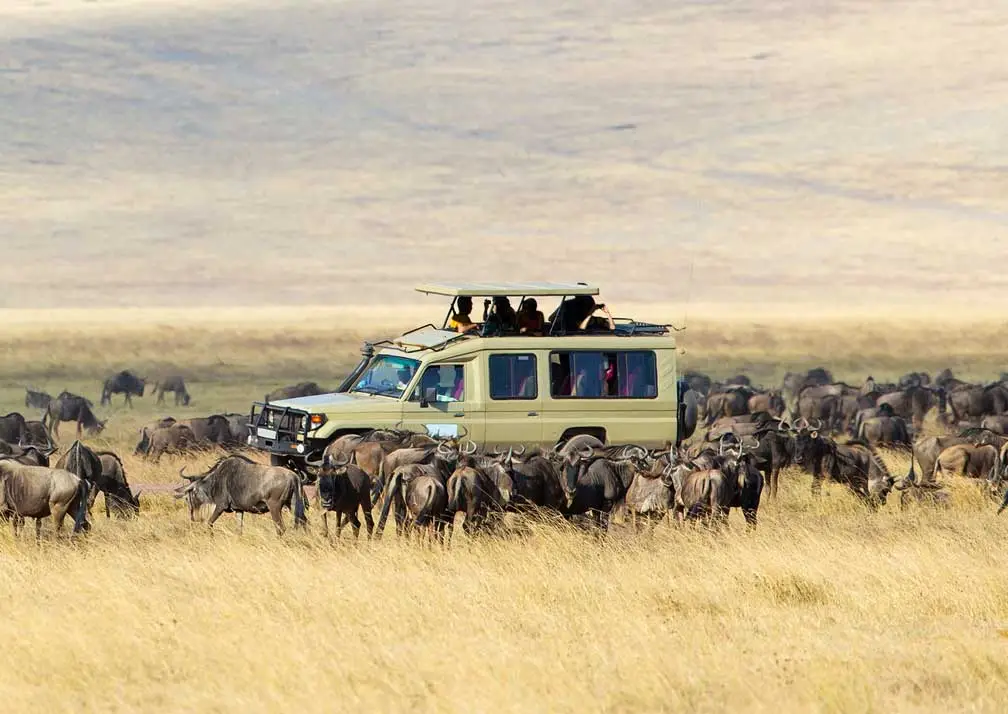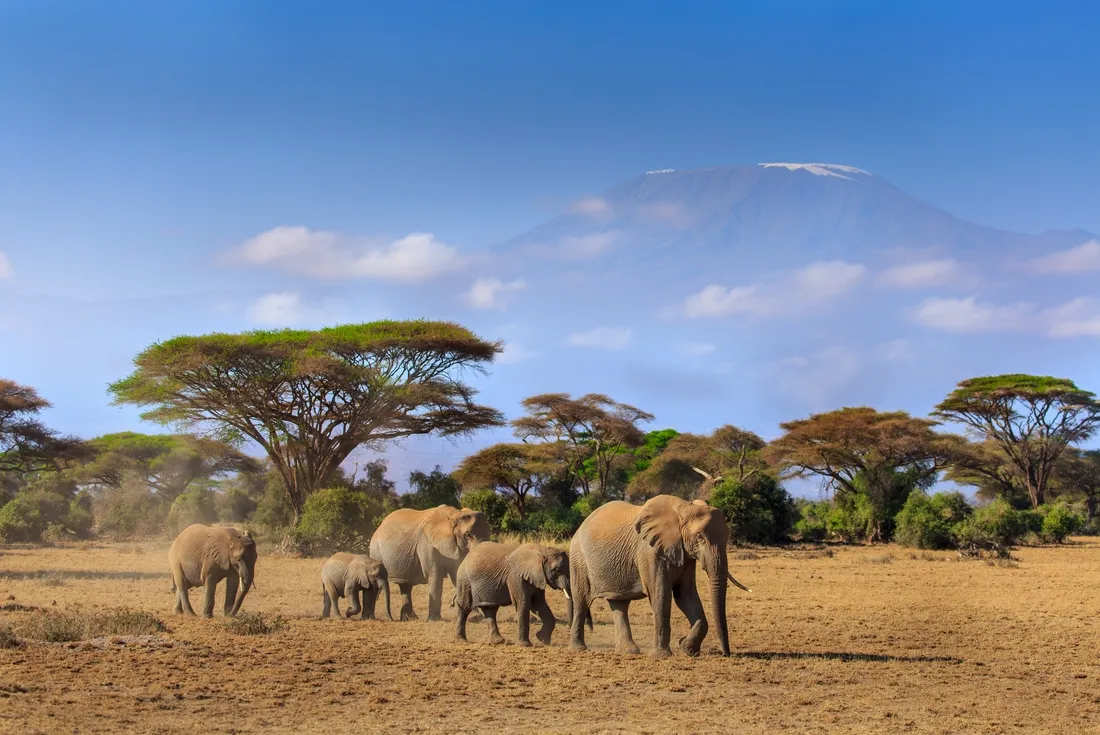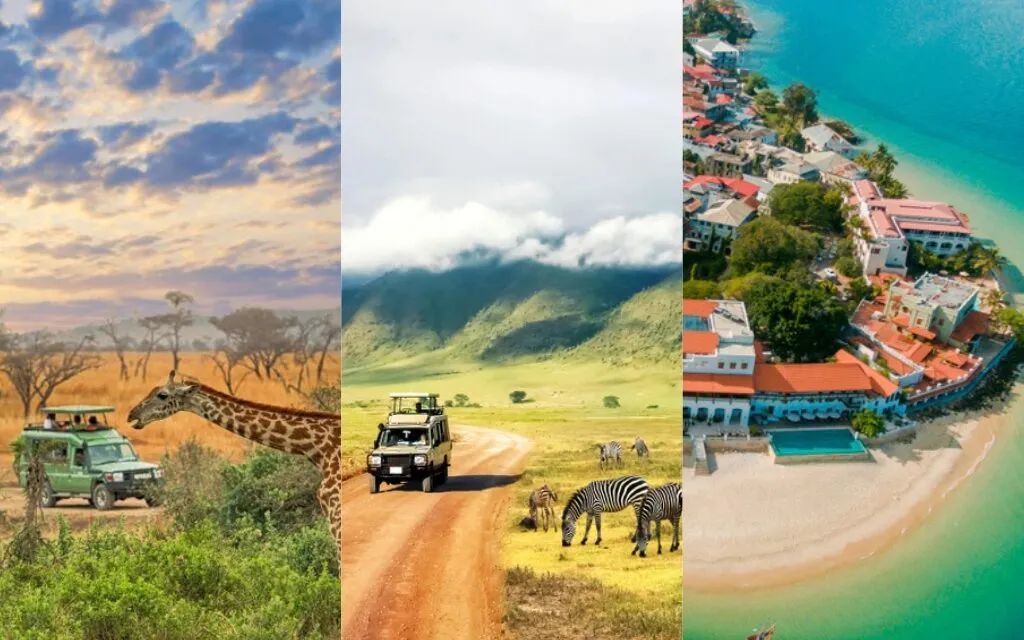Ultimate 4-Day Tanzania Safari | Serengeti & Ngorongoro Guide
Experience the ultimate 4-day Tanzania safari through Serengeti and Ngorongoro. Discover wildlife, top highlights, itinerary tips, and expert travel guidance.
This 4-Day Tanzania Safari combines two of Africa’s most celebrated wildlife destinations - the vast plains of Serengeti and the unique ecosystem of Ngorongoro Crater. Your adventure begins in Arusha, Tanzania’s safari capital, and ventures into the heart of the Northern Safari Circuit, covering approximately 1,200 kilometers of diverse landscapes and ecosystems. Throughout this journey, you’ll experience daily game drives led by experienced local guides who possess intimate knowledge of animal behavior patterns and seasonal movements.
The Serengeti-Ngorongoro combination offers an unparalleled wildlife experience, allowing you to observe over 2 million wildebeest during their annual migration and explore the Ngorongoro Crater, often called “Africa’s Eden” for its incredible concentration of wildlife within a single caldera. Whether you’re capturing the perfect sunrise photo over the endless plains or watching lions stalk their prey across the crater floor, this safari delivers spectacular wildlife encounters at every turn.
Your tour includes professional guide services, all park entrance fees, accommodation based on your chosen category (budget, mid-range, or luxury), meals, and transportation in specially modified 4x4 safari vehicles equipped with pop-up roofs for optimal game viewing and photography. Every detail is carefully planned to ensure your safety, comfort, and maximum wildlife encounters throughout this unforgettable Tanzania safari experience.
Book Your Safari Now4-Day Serengeti & Ngorongoro Safari Highlights
- Duration: 4 Days, 3 Nights (2 Nights in Serengeti)
- Destinations: Serengeti (14,763 km²), Ngorongoro Crater
- Main Focus: Big Five, game drives, private guided tours
- Tour Style: Private safari, customizable (2–8 people)
- Best Time: June–October for 90% wildlife sighting success
- Ideal For: Couples, small groups, wildlife photographers

Detailed 4-Day Tanzania Itinerary (Day by Day)
This carefully crafted itinerary maximizes wildlife viewing opportunities while ensuring comfortable travel times between destinations.
Day 1: Arusha to Serengeti National Park
Your adventure begins with an early morning departure from Arusha at 7:00 AM. Travel through the scenic landscapes of northern Tanzania, with a 6-hour drive that includes panoramic views of the Ngorongoro Crater rim. Stop at the Naabi Hill Gate for park registration and enjoy a packed lunch before continuing into the park. The afternoon features your first game drive in the Seronera Valley, focusing on resident wildlife including lions, leopards, and large elephant herds. As the day draws to a close, witness a spectacular Serengeti sunset before checking into your selected accommodation within or near the park. Dinner and overnight at your lodging, with time to share sighting stories around the campfire (depending on accommodation type).
Day 2: Full Day Serengeti Exploration
Begin with an early morning game drive at 6:30 AM when animals are most active and temperatures are cooler. This prime viewing time often yields predator hunts and excellent photography opportunities in the golden morning light. Return to camp for a late breakfast and relaxation during the midday heat. After lunch, embark on an afternoon game drive exploring different areas of the park, potentially following wildlife movements or focusing on specific species based on recent sightings. The day concludes with a special sundowner experience offering panoramic views of the Serengeti plains. Dinner and overnight at the same accommodation.
Day 3: Serengeti to Ngorongoro
After breakfast, enjoy a morning game drive en route to Ngorongoro, with continued wildlife viewing opportunities during the 3-hour transfer. The journey offers spectacular scenery and potential wildlife sightings along the way. Arrive at your Ngorongoro rim accommodation in the afternoon, with breathtaking crater views from your lodging. The afternoon includes an optional cultural visit to a local Maasai village to learn about traditional lifestyles and customs. Dinner and overnight at your crater rim accommodation, with time to prepare for tomorrow’s crater exploration.
Day 4: Ngorongoro Crater Tour and Return to Arusha
Depart early with a 6:00 AM descent into the crater for optimal wildlife viewing when animals are most active. Spend 6-7 hours exploring the crater floor with an expert guide, enjoying a picnic lunch at the hippo pool. The crater offers exceptional opportunities to view the Big Five and numerous other species in a compact area. In the late afternoon, ascend the crater walls and begin the 3-hour drive back to Arusha, arriving by early evening (approximately 6:00 PM) for onward travel connections or overnight accommodations.
What are the Destinations & Highlights of 4-Day Tanzania Safari?
This safari combines two iconic destinations that represent the very best wildlife viewing opportunities in East Africa, creating what many consider the perfect introduction to Tanzania’s natural wonders.
Serengeti National Park: Spanning an impressive 14,750 square kilometers, the Serengeti represents one of the world’s most famous wildlife sanctuaries. Home to approximately 3,200 lions, vast elephant herds, and the spectacular annual wildebeest migration, it offers unparalleled wildlife viewing across its diverse ecosystems. During your visit, you’ll explore the Seronera Valley, renowned for its year-round wildlife concentrations and excellent leopard sightings, particularly around the granite outcrops (kopjes) that dot the landscape. The vast plains create the quintessential African safari experience with endless horizons and dramatic predator-prey interactions.
Ngorongoro Crater: This UNESCO World Heritage Site measures 20 kilometers across and 600 meters deep, creating a natural amphitheater that hosts approximately 25,000 animals year-round. The crater is one of the few places in Tanzania where you can reliably spot all members of the Big Five in a single day, including the rare black rhinoceros. Its diverse landscape ranges from grasslands to forests and alkaline lakes, creating multiple habitats within a relatively compact area. The backdrop of the crater walls provides exceptional photographic opportunities throughout your exploration.
Key highlights include witnessing parts of the Great Migration (seasonal), excellent big cat sightings, including lions, cheetahs, and leopards, and close encounters with elephant herds and buffalo. Cultural experiences enhance your safari with visits to Maasai villages, where you’ll learn about traditional pastoralist lifestyles and their harmonious coexistence with wildlife. The region’s geological features, including the Olduvai Gorge, known as the “Cradle of Mankind,” add historical significance to your journey.
What’s Included & Excluded on your 4-Day Tanzania Safari Package
Understanding exactly what’s covered in your safari package helps you budget effectively and avoid unexpected expenses during your journey.
What’s Included:
- All park entrance fees for both Serengeti National Park and Ngorongoro Conservation Area (approximately $200 per person for the 4-day period).
- Professional English-speaking driver-guide with extensive wildlife knowledge and cultural insights.
- Transportation in a specially modified 4x4 safari vehicle with a pop-up roof, guaranteed window seat, and charging facilities for electronic devices.
- Accommodation for three nights based on your selected category (budget, mid-range, or luxury).
- All meals during the safari, including breakfast, lunch, and dinner, with options for dietary restrictions and preferences.
- Unlimited bottled water throughout the journey.
- Government taxes and service charges.
- Emergency evacuation insurance coverage during the safari period.
- Professional guide gratuities and park ranger fees.
- Cultural village visit fees are included in the itinerary.
What’s Excluded:
- International flights to and from Tanzania (prices vary significantly based on departure location and travel dates).
- Tanzania visa fees ($100 for US passport holders, varying amounts for other nationalities).
- Travel insurance (strongly recommended for medical coverage and trip protection).
- Personal expenses, including souvenirs, additional beverages, laundry services, and communication costs.
- Optional activities such as balloon safaris ($580 per person), additional cultural visits, or extended game drives.
- Tips for lodge staff and other service providers (typically $10-15 per day).
- Accommodation before and after the safari in Arusha or other cities.
- Airport transfers outside the safari period.
- Medical expenses and prescription medications.
- Any meals not specified in the itinerary and alcoholic beverages (unless specifically included in luxury packages).
This transparent breakdown allows you to calculate total trip costs accurately and prepare for any additional expenses you might incur during your Tanzania adventure.
4-Day Serengeti & Ngorongoro Safari Gallery
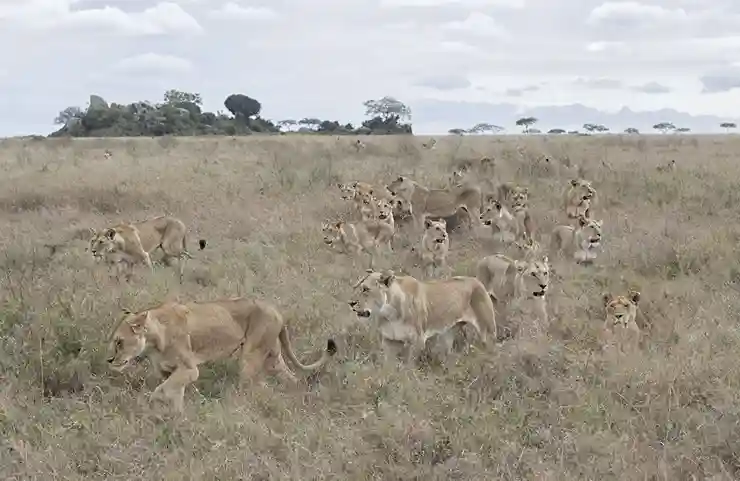
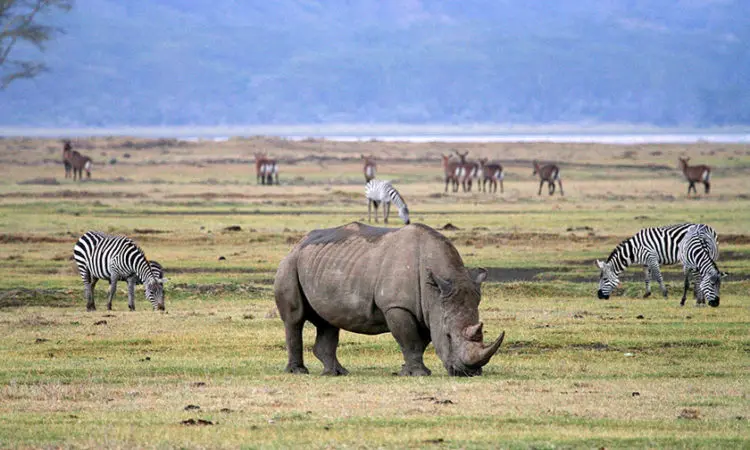
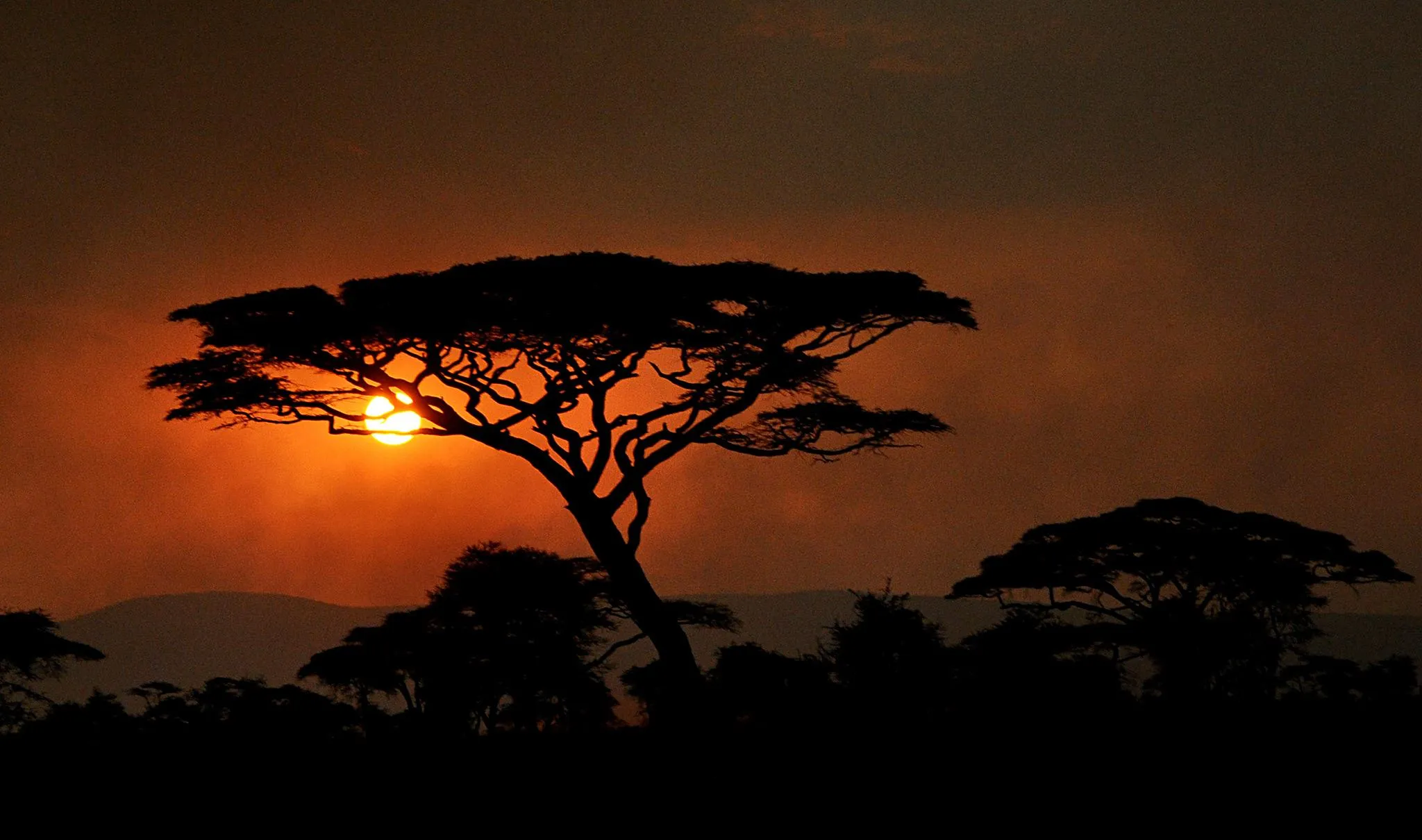
Accommodation Details: Where you Will Sleep on yor 4-day Serengeti & Ngorongoro Safari
Your lodging choices significantly impact your overall safari experience, from basic camping under the stars to luxury lodges with world-class amenities. We offer three distinct accommodation categories to suit different preferences and budgets.
Budget Category ($950-$1,200 per person):
These accommodations provide a comfortable yet economical safari experience. Options include Marera Valley Lodge and Eileen’s Trees Inn, offering clean, basic rooms with essential amenities. Public campsites within the parks provide an authentic bush experience with shared facilities, campfire dinners, and the sounds of the African wilderness as your nighttime soundtrack. All budget accommodations include basic meals, clean bedding, and mosquito nets for protection. Bathrooms may be shared in some locations, with hot water available at specific times of day. These options are ideal for travelers prioritizing the safari experience over luxury accommodations.
Mid-Range Category ($1,320-$2,000 per person):
These properties offer enhanced comfort without the premium price of luxury lodges. Acacia Farm Lodge provides a perfect blend of comfort and authenticity with en-suite bathrooms, hot showers, and traditional African décor. Serengeti Heritage Luxury Tented Camps feature spacious canvas accommodations with private bathrooms, comfortable beds, and elevated platforms providing excellent views of the surrounding landscape. Mid-range options include amenities like Wi-Fi in common areas, laundry services, and more varied dining options. Rooms typically feature quality furnishings, comfortable beds, and reliable hot water, creating a restful retreat after exciting days of wildlife viewing.
Luxury Category ($2,844+ h3er person):
For the ultimate safari experience, Gran Melia Hotel and Serengeti Melia Safari Lodge represent the pinnacle of safari luxury. These properties feature spa services, gourmet dining, and elegantly appointed rooms with modern amenities. Expect swimming pools, fitness facilities, and concierge services to enhance your experience. Luxury accommodations offer spacious rooms or tents with premium furnishings, panoramic views, and exclusive locations within or adjacent to the national parks. Dining experiences feature multi-course meals prepared by skilled chefs, often incorporating local and international cuisines with premium beverages available.
All accommodations provide three meals daily, with dietary restrictions accommodated with advance notice.
Food & Dietary Options: What you will eat on yor 4-day Serengeti & Ngorongoro Safari
Safari meals emphasize fresh, locally-sourced ingredients prepared by experienced camp and lodge chefs who understand the nutritional needs of active travelers exploring Tanzania’s wilderness areas.
Meal Quality and Variety:
Breakfast typically features continental options including fresh tropical fruits (papaya, mango, banana), cereals, eggs prepared to order, toast, pancakes, and local specialties like mandazi (East African donuts) alongside international coffee and tea selections. Most accommodations offer both buffet and à la carte options, with early breakfast available for dawn game drives.
Lunch often consists of packed meals during full-day game drives, featuring sandwiches, fresh salads, fruits, and snacks that travel well in safari conditions. These portable meals ensure you maximize wildlife viewing time without compromising nutrition or taste. Hot lunches at lodges include both international dishes and traditional Tanzanian cuisine served buffet-style or as set menus.
Dinner Experiences:
Evening meals showcase the best of East African hospitality with three-course dinners featuring grilled meats, fresh vegetables, rice, ugali (cornmeal staple), and seasonal fruits. Many lodges offer themed dinner nights with traditional music and cultural performances, enhancing your cultural immersion experience. Dining locations vary from formal restaurants at luxury lodges to atmospheric outdoor settings with campfire cooking demonstrations at tented camps.
Dietary Accommodations:
Vegetarian options are readily available with advance notice, featuring protein-rich legumes, fresh vegetables, and creative plant-based dishes that reflect both local and international influences. Vegan travelers can be accommodated with careful menu planning emphasizing local vegetables, fruits, and grain-based dishes. Gluten-free options include rice-based meals, fresh fruits, and specially prepared dishes using alternative grains. Halal dietary requirements are respected with appropriate meat preparation and ingredient selection. Food allergies and specific dietary restrictions can be accommodated with detailed advance communication to ensure safe and enjoyable dining throughout your safari.
Beverage Options:
Unlimited bottled water is provided throughout the safari, essential for proper hydration in the African climate. Tea and coffee are available at all meals, while some packages include soft drinks and local beers with dinner. Premium beverages and wines are available at additional cost at most lodges and camps.
4-Day Tanzania Safari Price, Cost & Payment Information
Understanding safari costs helps you budget effectively for this once-in-a-lifetime experience. Prices vary significantly based on accommodation level, group size, and seasonal factors.
Pricing Structure:
- Budget safaris range from $950-$1,200 per person sharing, including basic camping accommodations or simple lodges, all meals, park fees, and transportation.
- Mid-range options cost $1,320-$2,000 per person, featuring comfortable lodges with private facilities and enhanced meal options.
- Luxury experiences start at $2,844 per person for single travelers, with shared occupancy reducing costs by approximately 20-30%.
Contact us now to customize your 4-day Serengeti safari tour package!
Factors Affecting Price:
Group size significantly impacts per-person costs, with solo travelers paying premium rates while groups of 4-6 people enjoy the most economical pricing. Peak season (June-October) commands higher rates due to increased demand and optimal wildlife viewing conditions, while wet season (November-May) offers reduced rates with fewer crowds. Accommodation upgrades can add $200-800 per person, depending on the luxury level selected. Optional activities like balloon safaris ($580), cultural visits ($60), and crater rim walks ($40) are additional expenses to consider in your budget planning.
Payment Options:
We require a 30% deposit upon booking confirmation, with the balance due 30-60 days before departure. Payment methods include bank transfers, credit cards (with potential processing fees of 3-5%), and Pesapal for international transactions. Some operators offer payment plans for bookings made well in advance, allowing you to spread the cost over multiple installments without additional fees.
Cancellation Policy:
Standard policies allow full refunds for cancellations made 60+ days before departure, with graduated penalties for later cancellations (typically 50% refund for 30-60 days, no refund for less than 30 days). Travel insurance is strongly recommended to protect against unforeseen circumstances. Emergency cancellations due to medical reasons or travel restrictions may qualify for partial refunds or future travel credits, especially when documented with appropriate evidence.
Currency fluctuations may affect final pricing for international travelers, with some operators offering rate guarantees for early bookings.
What to Pack for Successful Tanzania Safari
Proper preparation enhances your comfort and enjoyment while ensuring you have everything needed for optimal wildlife photography and protection from the elements.
Clothing Essentials:
Pack lightweight, neutral-colored clothing (khaki, olive, or brown) that helps you blend with the environment and avoids attracting insects. Long-sleeved shirts and pants provide essential protection against mosquitoes during dawn and dusk game drives when malaria-carrying insects are most active. Include at least 4-5 changes of clothes, considering limited laundry facilities during your safari. A warm jacket or fleece is crucial for early morning game drives and evenings when temperatures can drop to 14°C (57°F), especially at the Ngorongoro Crater rim, where altitude increases the evening chill. Comfortable walking shoes with good ankle support are essential for crater rim walks and cultural visits, while sandals provide relief during hot midday periods at your accommodation.
Technical Equipment:
Binoculars (8x32 or 10x42) dramatically enhance wildlife viewing, allowing you to observe animal behavior from respectful distances. A camera with telephoto lens capabilities (at least 200mm, preferably 300mm+) captures those once-in-a-lifetime wildlife moments, while extra batteries and memory cards ensure you never miss a shot. A portable charger or power bank keeps devices operational during long game drives when vehicle charging may be limited. Consider bringing a small tripod or beanbag for camera stabilization during game drives.
Health and Safety Items:
Sunscreen with high SPF protection (50+) is non-negotiable under the intense African sun, while a wide-brimmed hat provides additional facial protection. Insect repellent containing DEET effectively deters mosquitoes and other biting insects. A basic first-aid kit with band-aids, pain relievers, anti-diarrheal medication, and any personal medications ensures you’re prepared for minor issues. Hand sanitizer and wet wipes maintain hygiene when facilities are limited.
Practical Accessories:
A small daypack carries essentials during game drives, while a headlamp or flashlight proves invaluable for early morning departures and evening activities. A reusable water bottle reduces plastic waste while ensuring proper hydration throughout your adventure.
Wildlife you will See on your 4-Day Tanzania Safari in Serengeti & Ngorongoro
Your safari through Serengeti and Ngorongoro offers some of Africa’s most spectacular wildlife viewing opportunities, with realistic expectations including multiple Big Five sightings and numerous other species.
Big Five Encounters:
The Ngorongoro Crater serves as a natural amphitheater hosting approximately 25,000 animals year-round, including all members of the Big Five. Lions number around 65 within the crater, often seen resting in the shade during midday or hunting during cooler morning and evening hours. The crater supports one of Tanzania’s most stable black rhinoceros populations (approximately 30 individuals), offering your best chance to spot these critically endangered giants. Approximately 300 African savannah elephants roam the crater floor, frequently gathering around water sources and acacia woodlands. Buffalo herds numbering in the thousands create dramatic scenes as they move across the grasslands. Leopards, though more elusive, inhabit the crater’s forested areas and rocky outcrops, with patient observers often rewarded with sightings.
Serengeti Specialties:
The Serengeti hosts approximately 3,200 lions, making it one of Africa’s premier destinations for big cat encounters. Large elephant herds migrate seasonally across the plains, while the Seronera Valley offers excellent year-round leopard viewing opportunities around granite kopjes. Cheetahs favor the open plains, where their incredible hunting speed can be witnessed during early morning game drives. Approximately 70 different mammal species and over 500 bird species inhabit these ecosystems, ensuring diverse wildlife encounters throughout your safari.
Great Migration Spectacle:
Depending on your travel timing, you may witness portions of the Great Migration involving over 2 million wildebeest, accompanied by hundreds of thousands of zebras and gazelles. This natural phenomenon follows predictable seasonal patterns, with calving season (December-April) in the southern Serengeti offering incredible predator-prey interactions. River crossings typically occur between July and September in the northern Serengeti, providing some of nature’s most dramatic wildlife spectacles.
While wildlife sightings can never be guaranteed, our experienced guides maximize your opportunities through intimate knowledge of animal territories, movement patterns, and communication with other safari vehicles about recent sightings.
Safari Vehicles Used on This Tanzania Tour
Your safari experience utilizes specially modified 4x4 safari vehicles designed specifically for optimal wildlife viewing and passenger comfort throughout your East African adventure.
Vehicle Specifications:
Our safari fleet features Toyota Land Cruisers and Land Rovers, specifically modified for game viewing with enhanced suspension systems for rough terrain navigation. Each vehicle features a pop-up roof allowing 360-degree wildlife viewing and photography opportunities while providing protection from the elements. The raised chassis provides excellent ground clearance for off-road driving and water crossings. Each passenger enjoys a guaranteed window seat, eliminating the common safari frustration of blocked views. Vehicles accommodate 6-7 passengers maximum, ensuring intimate group sizes and personalized attention from your guide.
Comfort Features:
All vehicles include charging ports for cameras, phones, and other electronic devices, essential for maintaining power during long game drives. A small refrigerator keeps bottled water and soft drinks cool throughout the day. Comfortable seating with adequate legroom ensures comfort during longer transfer drives between destinations. Large windows with removable canvas sides allow for optimal viewing and photography, while providing protection during inclement weather. Each vehicle carries reference materials, including wildlife guides and maps, to enhance your understanding of the ecosystems and species encountered.
Safety Equipment:
All vehicles carry comprehensive first-aid kits, emergency communication equipment (satellite phones and two-way radios), and multiple spare tires for remote area travel. Professional drivers undergo regular safety training, and vehicle maintenance ensures reliable performance in challenging terrain. Each vehicle features roll bars and reinforced construction for additional protection during off-road adventures. Fire extinguishers and emergency tools are standard in all safari vehicles.
Pickup and Drop-off Details:
Standard pickup occurs at Arusha hotels or Kilimanjaro International Airport between 7:00-8:00 AM on day one, with exact timing coordinated based on your accommodation location and flight schedules. Return drop-offs on day four accommodate onward travel plans, typically arriving in Arusha between 5:00-6:00 PM, allowing for evening flight connections (8:00 PM or later) or overnight stays. Hotel transfers within Arusha city limits are included in your package.
When is the Best Time to Visit Tanzania for a Perfect Safari
Both Serengeti and Ngorongoro offer exceptional experiences year-round, though each season presents distinct advantages depending on your priorities and interests.
Peak Dry Season (June-October):
This period represents the classic safari season with minimal rainfall, comfortable temperatures averaging 25°C (77°F) during the day and 14°C (57°F) at night. Wildlife concentrates around permanent water sources, making animal sightings more predictable and frequent. Vegetation is sparse, providing excellent visibility for wildlife photography and game viewing. The Great Migration typically moves through the northern Serengeti during July-September, offering spectacular river crossing opportunities. Road conditions are optimal with minimal mud and accessibility to all park areas. This popularity means higher prices, larger crowds at sighting locations, and the need for advance booking (at least 6-8 months recommended for quality accommodations).
Shoulder Seasons:
November and May offer excellent compromises with moderate rainfall, fewer crowds, and reasonable prices. Wildlife viewing remains excellent while avoiding the peak season intensity. November features the short rains with brief afternoon showers that rarely interfere with safari activities, while May transitions from wet to dry season with gradually improving road conditions and decreasing precipitation.
Weather Considerations:
Heavy rains typically occur March-May, potentially affecting road conditions and game drive schedules in some areas. However, afternoon thunderstorms often clear quickly, and morning game drives usually proceed normally.
Essential Safety and Health Tips for Your Tanzania Safari
Understanding potential risks and taking appropriate precautions allows you to focus on enjoying the incredible wildlife and cultural experiences during your Tanzania safari adventure.
Safari Safety Protocols:
Always remain in your vehicle during game drives unless specifically instructed otherwise by your guide. Wild animals are unpredictable, and even seemingly docile herbivores can become dangerous when threatened or protecting their young. Your guide’s instructions regarding wildlife encounters must be followed immediately and without question. Maintain safe distances from all wildlife, using binoculars and telephoto lenses for closer observation. Never attempt to feed animals or make sudden movements that might provoke defensive reactions. During walking safaris or cultural visits, stay close to your guide and follow established paths. Keep voices low during wildlife encounters to avoid disturbing animals or alerting prey to predator presence.
Vehicle Safety Standards:
All safari vehicles undergo regular mechanical inspections and carry emergency equipment, including first-aid kits, communication devices, and breakdown tools. Seat belts are provided and should be used during transfers, though they may be removed during game viewing for photography purposes. Roll bars and reinforced construction provide protection during off-road driving. Each vehicle maintains radio contact with base operations and other guides, ensuring rapid response to any emergency situation. Night driving restrictions in national parks enhance safety by limiting vehicle movement during hours when visibility is reduced.
Health Precautions:
Malaria prevention is crucial in these regions, with prophylactic medication recommended by travel medicine specialists at least 2-4 weeks before departure. Insect repellent containing DEET should be applied regularly, especially during dawn and dusk when mosquitoes are most active. Long sleeves and pants provide additional protection during these peak biting times. Drink only bottled or purified water and ensure food is thoroughly cooked at all establishments. Sun protection, including high SPF sunscreen, sunglasses, and wide-brimmed hats, prevents sunburn and heat-related issues in the equatorial sun.
Medical Preparedness:
Comprehensive travel insurance, including emergency evacuation coverage, is strongly recommended for remote area travel. Basic first-aid supplies should include pain relievers, anti-diarrheal medication, and any personal prescription drugs.
Travel Requirements for Your Tanzania Safari
Understanding Tanzania’s entry requirements well in advance prevents last-minute complications and ensures compliance with current regulations for a smooth safari experience.
Passport and Visa Requirements:
A valid passport with at least six months remaining validity beyond your departure date is mandatory for all international visitors. Tanzania requires visas for most nationalities, with US passport holders paying $100 for single-entry tourist visas valid for 90 days. European Union citizens pay $50, while other nationalities have varying fee structures. Visas can be obtained online through the Tanzania eVisa system (recommended for convenience), at Tanzanian embassies abroad, or upon arrival at major entry points, including Kilimanjaro International Airport. Online applications typically process within 7-10 business days and reduce waiting time at immigration. The visa application requires a recent passport photo, flight itinerary, and accommodation details.
Health Documentation:
Yellow fever vaccination certificates are required for travelers arriving from or transiting through yellow fever-endemic countries. While not mandatory for direct flights from non-endemic areas, vaccination is recommended for personal protection. The certificate must be obtained at least 10 days before travel to be considered valid. Some countries may require proof of yellow fever vaccination when returning from Tanzania, so check your home country's requirements before travel.
Medical Recommendations:
Malaria prophylaxis is strongly recommended for travel to both the Serengeti and Ngorongoro regions. Consult a travel medicine specialist 4-6 weeks before departure to determine the most appropriate medication based on your medical history and travel itinerary. Common options include doxycycline, mefloquine, or atovaquone-proguanil. Routine vaccinations should be current, including hepatitis A and B, typhoid, and tetanus. Some travelers may benefit from additional vaccines based on their specific itinerary and risk factors.
Travel Insurance:
Comprehensive travel insurance, including medical coverage and emergency evacuation, is essential for safari travel. Policies should cover adventure activities, medical treatment, and evacuation to appropriate medical facilities. Many operators require proof of adequate insurance coverage before confirming bookings. Coverage should include trip cancellation, medical emergencies, evacuation, personal liability, and lost luggage.
Currency and Banking:
US dollars are widely accepted, with bills dated 2006 or newer preferred by most establishments. Credit cards are accepted at major lodges and hotels, though cash is necessary for tips, souvenirs, and small purchases.
Why Choose Us for Your Tanzania Safari
Our team of passionate wildlife experts and cultural ambassadors has been creating unforgettable safari memories for over two decades in Tanzania’s most spectacular destinations.
Our Experience and Expertise:
Our company has guided thousands of travelers through Tanzania’s Northern Safari Circuit, building an unmatched reputation for safety, reliability, and exceptional wildlife encounters. Our team includes certified Tanzania Tourism Association guides, wildlife biologists, and cultural specialists who bring deep local knowledge and genuine passion to every safari experience. We maintain a 97% satisfaction rating across independent review platforms, with over 70% of our clients coming through personal referrals from previous travelers.
Professional Certifications:
All our guides hold professional certifications from the Tanzania Tourism Association and undergo continuous training in wildlife behavior, first aid, and cultural sensitivity. Our company maintains active memberships in the Tanzania Association of Tour Operators (TATO) and adheres to strict ethical guidelines regarding wildlife viewing and community engagement. We’ve earned Gold certification from Responsible Tourism Tanzania for our sustainable practices and community development initiatives.
Guide Expertise:
Our driver-guides average over 15 years of safari experience, with intimate knowledge of animal behavior patterns, seasonal movements, and optimal viewing locations. Many hold specialized certifications in ornithology, photography, and cultural interpretation, enhancing your safari experience beyond basic wildlife viewing. All guides are fluent in English, with many speaking additional languages, including German, French, Spanish, and Italian. Their passion for wildlife conservation and cultural heritage shines through in every safari experience.
Conservation Commitment:
We actively support local conservation initiatives through partnerships with wildlife research organizations and community development projects. A portion of every safari booking contributes to anti-poaching efforts, habitat preservation, and education programs that benefit both wildlife and local communities. Our vehicles and operations follow strict environmental guidelines to minimize our ecological footprint in these sensitive ecosystems.
Safety Standards:
Our vehicles undergo rigorous maintenance schedules exceeding industry standards, with comprehensive insurance coverage and emergency communication equipment. All guides receive regular safety training and first-aid certification, while our operations center maintains 24/7 communication with all safari vehicles.
Ready for Your 4-Day Private Serengeti & Ngorongoro Safari?
Join Capable Africa Tours for a 4-day private Tanzania safari, with 2 nights in Serengeti and a day in Ngorongoro Crater. Witness the Big Five, enjoy private game drives, and immerse yourself in Tanzania’s wildlife and culture.
- 90% success rate for Big Five sightings
- Private 4WD vehicles with expert guides
- Eco-friendly lodges with full-board meals
- Customizable itinerary for small groups
- Supports local conservation efforts
Limited spots for this exclusive 4-day Serengeti safari—book now to secure your adventure!
Book This Safari NowBook Your 4-Day Private Serengeti & Ngorongoro Safari
Frequently Asked Questions about 4-Day Serengeti & Ngorongoro Safari
These frequently asked questions address practical concerns that can significantly impact your safari experience and overall satisfaction.

